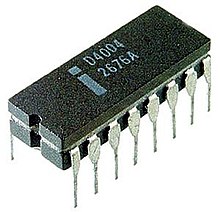What Is A Microprocessor?
 |
| Texas Instruments TMS1000 |
A microprocessor is a computer processor that
incorporates the functions of a central processing unit on a single integrated
circuit (IC), or sometimes up to 8 integrated circuits. The microprocessor is a
multipurpose, clock-driven, register-based, digital integrated circuit that
accepts binary data as input, processes it according to instructions stored in
its memory, and provides results (also in binary form) as output.
Microprocessors contain both combinational logic and sequential digital logic.
Microprocessors operate on numbers and symbols represented in the binary number
system.
 |
| Motorola 6800 |
The integration of a whole CPU onto a single or a
few integrated circuits greatly reduced the cost of processing power.
Integrated circuit processors are produced in large numbers by highly automated
metal-oxide-semiconductor (MOS) fabrication processes, resulting in a low unit
price. Single-chip processors increase reliability because there are many fewer
electrical connections that could fail. As microprocessor designs improve, the
cost of manufacturing a chip (with smaller components built on a semiconductor
chip the same size) generally stays the same according to Rock's law.
 |
| First microprocessor by Intel, the 4004. |
Before microprocessors, small computers had been
built using racks of circuit boards with many medium- and small-scale
integrated circuits. Microprocessors combined this into one or a few large-scale
ICs. Continued increases in microprocessor capacity have since rendered other
forms of computers almost completely obsolete (see history of computing
hardware), with one or more microprocessors used in everything from the
smallest embedded systems and handheld devices to the largest mainframes and supercomputers.

Comments
Post a Comment